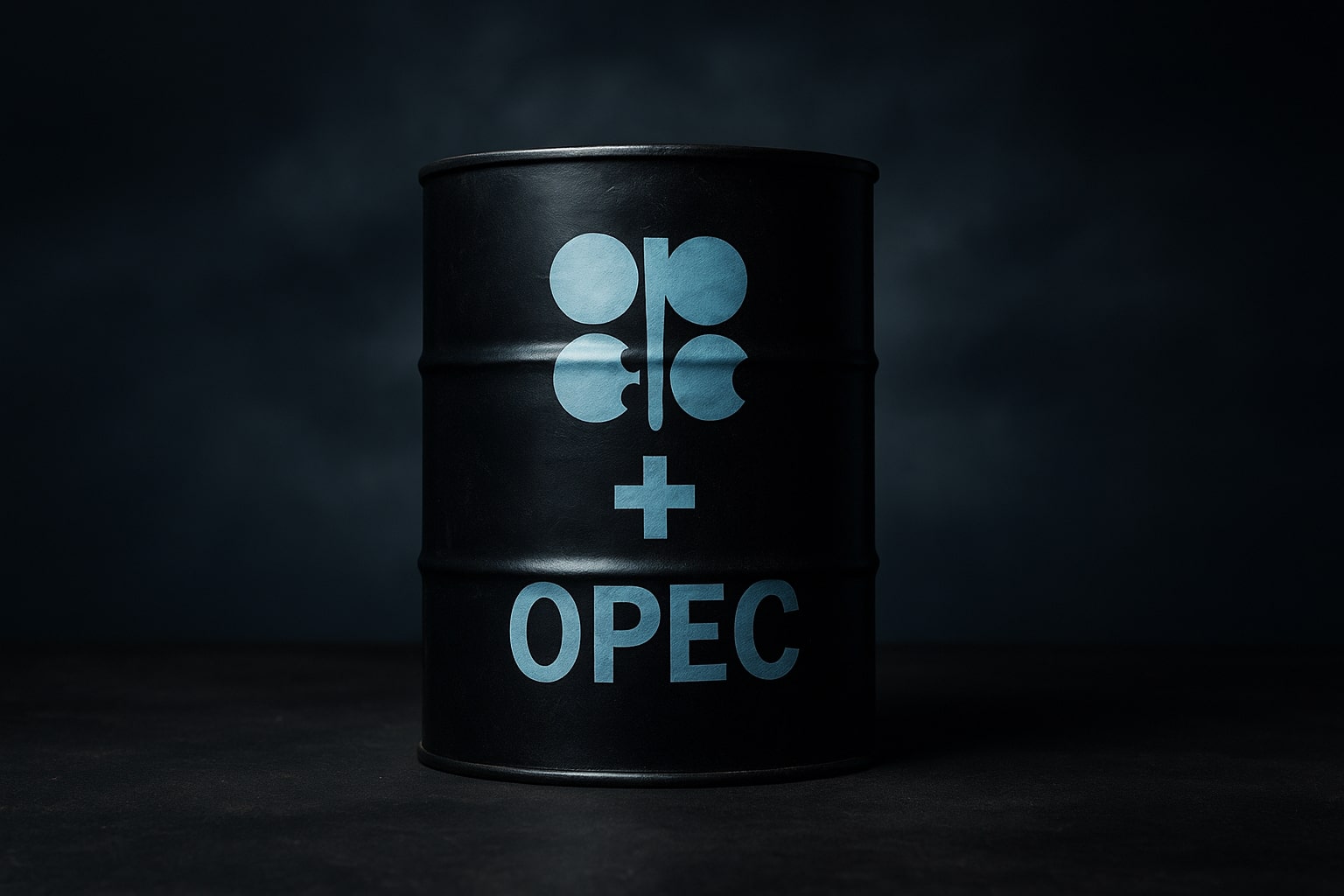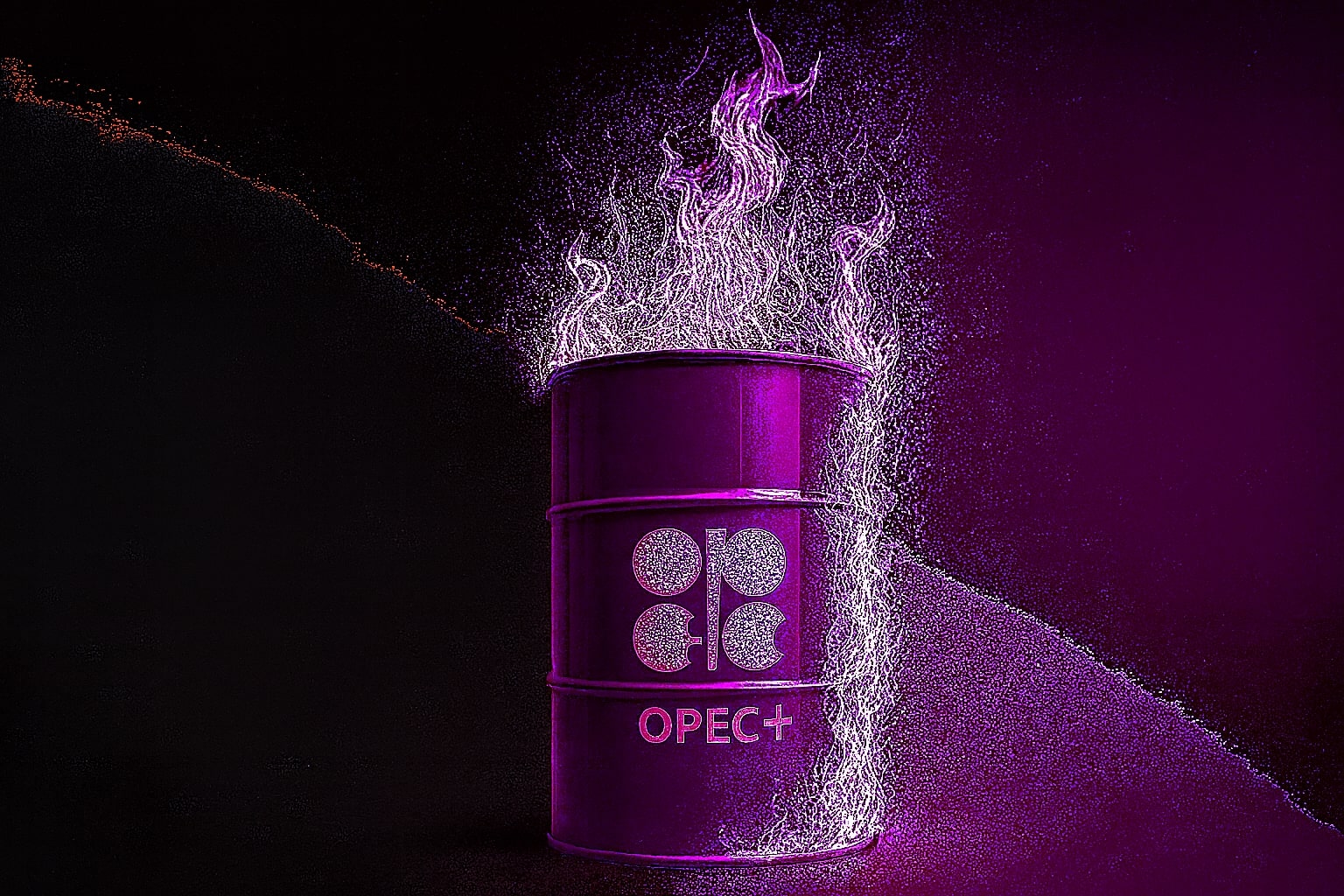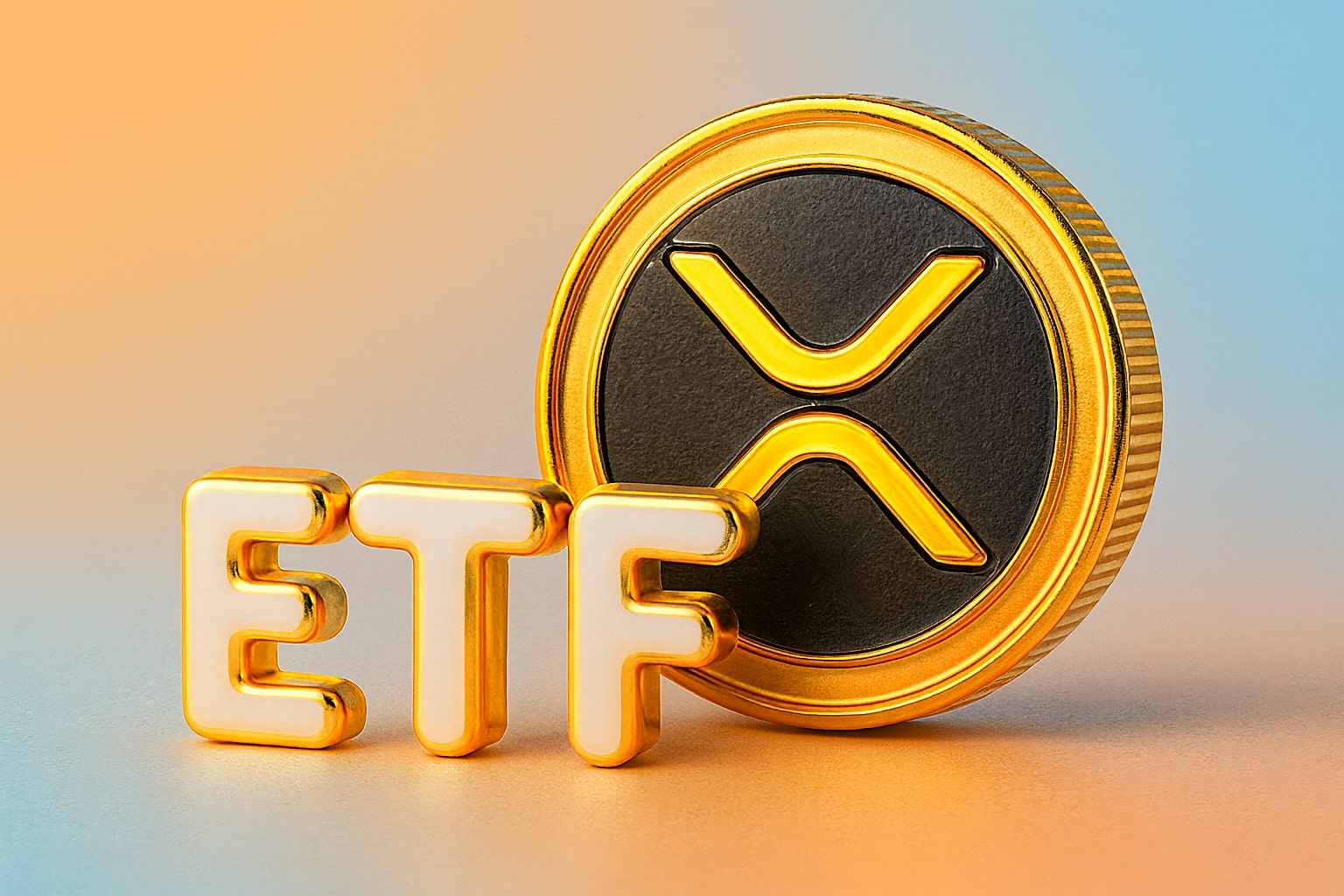
Oil Prices Crash as OPEC+ Hikes and Iran Floods Market with Cheap Crude
WTI and Brent fall over 12% as ceasefire erases Middle East premium, China boosts Iranian imports, and U.S. delays SPR refill | That's TradingNEWS
WTI (CL=F) and Brent (BZ=F) Face Supply Shock Whiplash as OPEC+, Iran, and China Reshape Oil Risk Premiums
Crude Market Unwinds 12% After Iran-Israel Ceasefire and OPEC+ Signals Production Hike
Oil benchmarks West Texas Intermediate (CL=F) and Brent Crude (BZ=F) have fallen sharply from last week’s geopolitical high, shedding over 12% after U.S. President Trump brokered a ceasefire between Israel and Iran. The end of the 12-day conflict erased the risk premium that had briefly lifted Brent above $80. As of Friday, WTI traded near $65.76, while Brent slipped to $67.07, marking their lowest levels since April. Market sentiment deteriorated further following leaked statements from four OPEC+ delegates, who confirmed the alliance is planning a new 411,000 bpd production hike in August after a similar July increase.
U.S. Crude Draws and Gasoil Shortages Offer Temporary Floor, but Macro Pressure Dominates
Despite this plunge, some bullish signals emerged late in the week. The U.S. Energy Information Administration (EIA) reported significant draws in both crude and refined fuel inventories, with ARA (Amsterdam-Rotterdam-Antwerp) gasoil storage falling to its lowest in over a year. Simultaneously, Singapore’s middle distillates inventories declined on rising net exports. Yet these bullish datapoints failed to hold price levels as market attention reverted to fundamentals. Crude refining activity remains strong, but global surplus projections for H2 have grown. Phil Flynn from Price Futures noted, “Inventories are tighter than anyone expected, but OPEC’s signal is louder.”
China Accelerates Iranian Oil Imports to Record 1.8 Million bpd as U.S. Offers Geopolitical Leeway
China’s appetite for discounted Iranian barrels has surged, with Vortexa data showing purchases averaging 1.8 million bpd between June 1-20 — the highest ever recorded. Kpler also reported 1.46 million bpd through June 27. This increase came as Iranian exports jumped 44% in the week after Israel’s nuclear site strikes. While sanctions technically remain, Trump’s recent post on Truth Social hinted at tacit approval, stating, “China can now continue to purchase Oil from Iran.” The link between geopolitical concessions and oil trade is now direct. Iran seized the opportunity to unload inventory, reinforcing bearish price pressure across the global crude complex.
Russian Output and Revenue Shrink as Transneft Volumes Decline and Budget Falls Short
Production declines are deepening in Russia. Pipeline operator Transneft reported a 2.8% drop in crude volumes in 2024, with further contraction expected through 2025. Revenue projections have been slashed, and oil-linked income in the Russian budget has dropped 24% below original targets. Western sanctions, a strong ruble, and a sub-$60 Urals crude price are all converging to constrain Moscow’s ability to monetize oil. The National Wealth Fund has lost nearly $6 billion in liquid reserves in May alone, according to the Finance Ministry. These developments, while bearish for Russian fiscal policy, have not translated into supportive crude price action due to oversupply elsewhere.
Middle East Risk Recedes as Hormuz Remains Open and Houthi Threats Shift to Aramco Infrastructure
Geopolitical tailwinds faded quickly after the U.S. confirmed that Strait of Hormuz traffic remains unobstructed. Iran refrained from retaliation after U.S. strikes on its nuclear sites, and Trump administration stated it had no plan to refill the SPR, further weakening demand assumptions. Meanwhile, Iranian-linked cyber operations began pivoting toward Aramco targets, according to the Foundation for Defense of Democracies. The Houthis have historically targeted Saudi oil infrastructure, and renewed social media campaigns suggest a return to asymmetric threats. However, without physical damage or production loss, oil markets have largely dismissed this phase as noise.
OPEC+ Meeting on July 6 Looms Large as Analysts Brace for More Aggressive Output Increases
Market participants now await the July 6 OPEC+ summit, which ING expects will solidify another 411,000 bpd production hike for August. ING analysts believe these moves will place the global crude balance into a "large surplus" by Q4, assuming no new Middle Eastern escalation. Given that July increases are already baked into market expectations, confirmation of August expansion could trigger further bearish positioning. Hedge funds and CTA flows have shifted to net short across Brent and WTI contracts this week, amplifying downside risk unless demand rebounds sharply.
U.S. Strategic Petroleum Reserve Refill on Hold as Admin Prioritizes Stability Over Price Floors
The U.S. SPR remains near its lowest levels since the 1980s, with no near-term refill planned. This policy stance removes a critical demand backstop, particularly in the face of synchronized supply increases from OPEC+ and Iran. Trump’s strategy appears to prioritize geopolitical leverage over market stabilization, using crude flows as negotiation tools with both Tehran and Beijing. The lack of emergency buy-side support means the market must absorb supply shocks without state intervention, heightening downside vulnerability.
CL=F and BZ=F Outlook Turns Bearish as Supply Signals Outweigh Short-Term Demand Boosts
With WTI and Brent both down over 12% for the week, and production hikes aligning across OPEC+, Iran, and Russia, the near-term structure has turned bearish. Support levels for WTI (CL=F) now sit near $63.80, with Brent eyeing a test of $65.00. The risk of further downside is elevated unless either China slows imports from Iran or OPEC+ unexpectedly pauses hikes. For now, trader sentiment, positioning data, and geopolitical signals all point to additional softness in crude benchmarks.
Buy/Sell/Hold Verdict: Sell WTI (CL=F) and Brent (BZ=F) on Surplus Risk and Geopolitical Pivot
Based on synchronized supply expansions, weak SPR policy, and aggressive Iranian exports, the crude market's short-term outlook is decisively bearish. Until OPEC+ changes course or demand shocks emerge from unforeseen catalysts, WTI and Brent = Sell. Target zones for accumulation lie lower, with CL=F at $60 and BZ=F near $62 providing stronger long-term risk-reward setups.
That's TradingNEWS
Read More
-
SCHD ETF Price at $27: Can SCHD’s 4% Yield and 9.15% Dividend Growth Beat High-Yield Covered Call ETFs?
15.12.2025 · TradingNEWS ArchiveStocks
-
XRP ETFs Close on $1B Inflows as XRPI at $10.92 and XRPR at $15.52 Hit 52-Week Lows
15.12.2025 · TradingNEWS ArchiveCrypto
-
Natural Gas Price Forecast: NG=F Holds the $4 Floor as Oversupply Clashes with 2026 LNG Demand
15.12.2025 · TradingNEWS ArchiveCommodities
-
USD/JPY Price Forecast - Dollar to Yen At 155: Yen Strength Builds As BoJ Hike And NFP Collide
15.12.2025 · TradingNEWS ArchiveForex



















